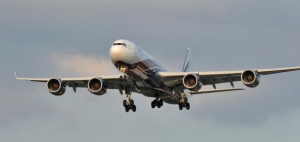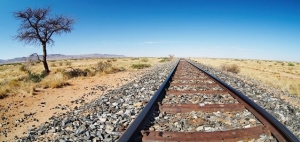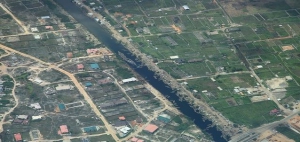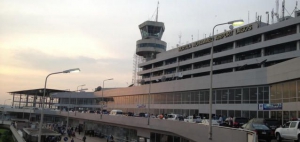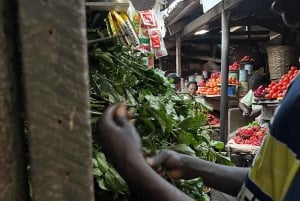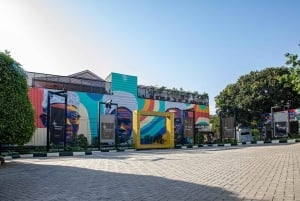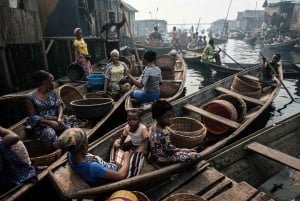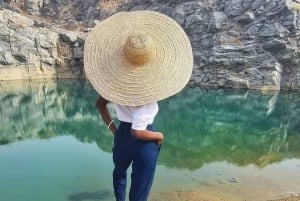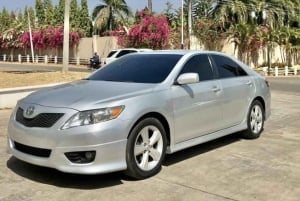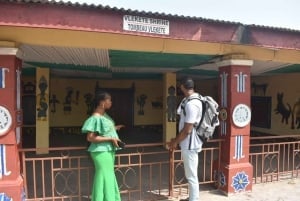Getting There
There a number of ways to travel to Nigeria, the most common and practical being by air, followed by road, lastly by sea. The latter is used largely for cargo.
By Air
The most widely used airports in Nigeria are: Murtala Muhammed International Airport in Lagos and Nnamdi Azikiwe International Airport in Abuja (North Central Region). There are other options which include flying into either Port Harcourt International Airport (South Region) or Mallam Aminu Kano International Airport (North East Region). These however are no longer very popular options, as very few international airlines use these routes.
Arik Air, a Nigerian based airline that operates international, domestic and regional routes, has direct services to London Heathrow, New York, Istanbul and several African cities including Johannesburg, Accra, Dakar, Monrovia, Cotonou and Luanda. Other local airlines providing some regional flights are Bellview Airlines and Aero Contractors.
Nigeria also has a very large number of international flights coming in and out on a daily basis from airlines including:
-
Air France, KLM
-
British Airways
-
Virgin Atlantic
-
Emirates
-
Kenya Airways
-
Egypt Air
-
Ethiopian Airlines
-
Lufthansa
-
South African Airways
-
Swiss (formerly Swissair)
There are very good connections with London, Amsterdam, Paris, Dubai and a number of European cities, as well as with Addis Ababa, Nairobi and Johannesburg in East and South Africa.
Flying in from Europe
The average flight time between London and Lagos is about nine hours. The majority of airlines fly direct to the Murtala Muhammed International Airport in Lagos, however British Airways also operates flights to Abuja. KLM has flights between Amsterdam and Abuja and also the city of Kano. Air France additionally has flights from Paris directly to Port Harcourt.
Flying in from North America
If flying from North America, you have a few options open to you. Firstly you can come in via Europe. Secondly it is possible to fly with Delta Airlines, who offer a direct flight between Atlanta and Lagos. Thirdly you can fly with United Airlines who have just begun to offer direct flight services from Houston and Washington DC to Lagos.
It is important to always bear in mind that flights to and from Nigeria are very popular and they fill up very quickly. The most popular routes include flights from Lagos to Dubai, and Lagos to London.
By Road
The major route from Europe through West Africa roughly runs through Morocco, Mauritania, Senegal, Mali, Burkina Faso, Ghana, Togo, Benin, Nigeria and Cameroon. From Cameroon it’s sometimes possible to cross into East Africa via Chad and Sudan but this route is routinely closed because of unrest in these countries.
You can enter Nigeria by road from Benin, Cameroon and Niger. The easiest and quickest route is from Zinder in Niger through to Kano, then west to Maiduguri and into Cameroon at Mora. But it’s much more interesting to continue south to Jos and then on down to Calabar via the Yankari National Park. The alternative overland route is from Benin along Nigeria’s coastal highway, the fastest route between Lagos and Cameroon.
Via Republic of Benin
The principal link and the busiest border-crossing is at Kraké on the Benin side of the Badagry–Lagos Expressway. Roads on both sides are in reasonably good condition, but the traffic is heavy and the border is notoriously slow. You can get public transport from Cotonou direct to Lagos. Alternatively, travel to Porto Novo on the Benin side and cross into Nigeria at the Idi-oroko border-post some 30km to the north of Kraké. From here the road goes to Ikeja in northern mainland Lagos, and public transport from Porto Novo arrives at the Oshodi Motor Park, where you can get transport for onward travel without going into Lagos.
Via Cameroon and Chad
There are two principal borders between Nigeria and Cameroon, one in the south near Ikom, north of Calabar and one in the north near Maiduguri. Mfun border is 30km to the east of Ikom where the road is tar-sealed to the border. Here there is a rather grand suspension bridge over the Cross River, which forms part of the border. From Ekok, the first town on the Cameroon side, you simply walk down the hill to the Cameroon customs and immigration sheds before crossing the bridge to complete the Nigerian formalities on the other side. In Cameroon there are bush taxis from Mamfé to the border, and there are regular vehicles on the Nigerian side to Ikom.
To get to Chad (despite sharing a border, Nigeria and Chad do not have a road crossing), the best border to cross is the Ngala border, in the extreme northeast of the country about 140km east of Maiduguri, that crosses to Fotokol on the Cameroon side, where the road leads directly across a 100km bottleneck of Cameroon to Kousséri. Here, a bridge over the confluence of the Chari and Logone rivers links Kousséri with the capital of Chad, Ndjamena, on the other side. From Maiduguri, you can take a taxi to Ngala, and another to cover the short distance to the border, and then a bush taxi on the Cameroon side to take you to Kousséri. The total journey is roughly 250km and can be managed in a day. You’ll need a visa for Chad but if you are only crossing this small section of Cameroon and not going elsewhere in the country, free transit visas are issued at the border at each end.
Via Niger Republic
There are several tar-sealed roads between Niger and Nigeria that many Hausa traders use frequently. The most common crossing and the closest to the Niger capital of Niamey is Birnin-Nkonni in Niger to Ilela in Nigeria, 85km north of Sokoto. The other main crossings are Maradi in Niger to Katsina, 45km from the border; and Zinder in Niger to Kano, which is roughly 140km from the border. All crossings are reasonably straightforward and roads are tar-sealed, though they do have a few pot-holes. In Niger, there are buses from Niamey to the borders at Birnin-Nkonni and Maradi, and another service to Zinder, from all of which you can get public transport to the borders themselves, though the best bet is Birnin-Nkonni, which is right on the border. Here you can find a bush taxi going directly to Sokoto.
In Maradi you can get a bush taxi to the border town of Dan-Issa and change vehicles there for onward travel to Katsina in Nigeria, and in Zinder you can again get a bush taxi to the border, where you can change onto another one heading towards Kano.
By Sea
Although boats and ferry services exist, it is no longer a conventional mode of travel when coming to Nigeria.
By Rail
Currently in Nigeria trains are used for moving cargo. Rail used to be used very heavily for moving cash crops, and cargo from the north of the country to the ports in the south. The lines and trains unfortunately have been neglected in recent years, and although there is a drive by government to improve services, it is not an advisable means of travel to Nigeria.


